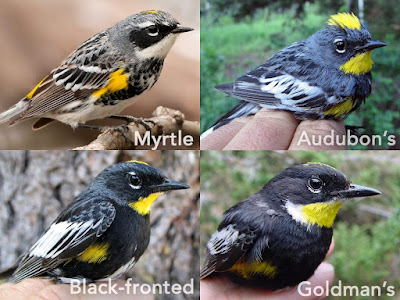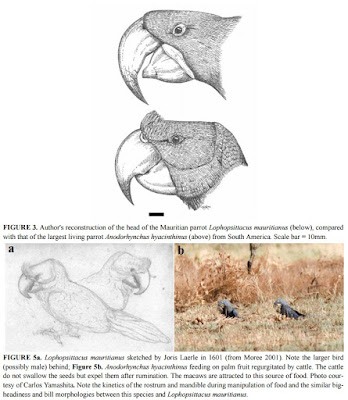 |
| Wiehenvenator albati
Rauhut, Hübner & Lanser, 2016
|
ABSTRACT
Fragmentary remains of a large, robustly built theropod dinosaur were recovered from the marine middle Callovian Ornatenton Formation of north-eastern Northrhine-Westphalia, Germany. The specimen includes a premaxilla, maxilla, lacrimal, postorbital, dentary, several caudal vertebrae, ribs, fibulae, astragalus, and partial calcaneum. It is here described as a new species of megalosauroid, Wiehenvenator albati n. gen. n. sp., diagnosed by a strongly reduced maxillary antorbital fossa on the base of the ascending process of the maxilla, a very short anterior ramus of the lacrimal with an additional pneumatic depression anteroventral to the lacrimal fenestra, a transversely expanded orbital facet in the postorbital, and a laterally flexed proximal end of the ascending process of the astragalus. Phylogenetic analysis recovers Wiehenvenator as a megalosaurine megalosaurid, sister taxon to the Late Jurassic genus Torvosaurus. It thus adds to the considerable diversity of megalosauroids in the Middle Jurassic. A time-calibrated phylogeny of theropods indicates a rapid radiation of averostran theropods between the Toarcian and the Bathonian. This radiation was probably triggered by the Pliensbachian-Toarcian extinction event, which might have been more important for theropod evolution than the Triassic-Jurassic extinction. The fossil record indicates a faunal turnover from megalosauroid dominated Middle Jurassic to allosauroid / coelurosaur dominated Late Jurassic faunas. However, differences in the Middle and Late Jurassic theropod fossil records both in respect to geographic distribution of localities, as well as sampled environments make this inference problematic, at least in respect to allosauroids. An analysis of environmental preferences of allosauroids and megalosauroids indicates that the former preferred inland environments, whereas the latter are more common in nearshore environments.
Keywords: Megalosauroidea; Ornatenton Formation; theropod evolution; Jurassic
SYSTEMATIC PALAEONTOLOGY
Dinosauria Owen, 1842
Theropoda Marsh, 1881
Megalosauroidea (Fitzinger, 1843)
Megalosauridae Fitzinger, 1843
Wiehenvenator gen. nov.
zoobank.org/95638CFF-5618-4D31-9086-D821F6EE6B39
Etymology. Wiehen, for the Wiehengebirge, a chain of hills south of Minden, where the holotype specimen was found and venator, Latin for hunter. The gender of the genus is masculine.
Type species. Wiehenvenator albati sp. nov.
Wiehenvenator albati sp. nov.
zoobank.org/262FA776-9ABC-4565-9A17-931CB4BEFBFC
Etymology. The species epithet honours Friedrich Albat, who found the holotype specimen.
Holotype. Fragmentary skull and skeleton of a single individual; right premaxilla (WMN P27475), right maxilla (WMN P27504), right lacrimal (WMN P27457), right postorbital (WMN P27477), (?)anterior ramus of right quadratojugal (WMN P27470), partial right dentary (WMN P27461, 27462, 27466), six isolated teeth (WMN P27454, 27456, 27459, 27467, 27473, 27483), three caudal vertebrae (WMN P27499, 27500, 27501), five dorsal ribs and rib fragments (WMN P27464, 27465, 27476, 27480, 27503), a pair of fused posterior medial gastralia (WMN P27455), a manual phalanx (WMN P27482), both fibulae (WMN P27479, 27502), right astragalus (WMN P27458), and a partial right calcaneum (WMN P27484). Two further partial caudal vertebrae (WMN P29131, 47417) were found at different times in the float at the type locality and probably belong to the same individual.
Type locality and horizon. Former Pott quarry, Lutternsche Egge, near Minden, north-eastern Northrhine-Westphalia, Germany. The bone-bearing layer is a condensation horizon with abundant bivalves of the species Gryphaea dilatata in the middle Ornatenton, Erymnoceras coronatum ammonite zone, middle Callovian (Riegraf, 1994).
CONCLUSIONS
A partial skeleton of a new megalosaurid theropod, Wiehenvenator albati, from the Callovian marine Ornatenton of northern Germany adds to the diverse association of megalosaurid theropods from the Middle Jurassic of Europe. The new taxon is a derived megalosaurine megalosaurid closely related to Torvosaurus, which might be the only megalosaurid taxon to survive into the Late Jurassic. The available evidence supports a rapid radiation of averostran theropods within probably less than 15 Myr during the latest Early and early Middle Jurassic, during which at least nine important lineages were established: Ceratosauridae, Noasauridae, Abelisauridae, Piatnitzkysauridae, Megalosauridae, Spinosauridae, Metriacanthosauridae, Allosauria, and Coelurosauria. Theropod faunal composition seems to show marked changes during the Jurassic with mainly megalosauroid taxa being reported from the Middle Jurassic, whereas allosauroids and, especially, coelurosaurs gained increasing importance in the Late Jurassic. Ceratosaurs seem to have been rare components of both Middle and Late Jurassic theropod faunas, although this might partially reflect geographic patterns, as some clades might have radiated first in southern Gondwana, a region that is poorly represented in the fossil record in post-Bajocian localities. Both geographical distribution and environments sampled during different times of the Jurassic might have an important impact on our views of theropod faunal composition at different times.
Oliver W.M. Rauhut, Tom R. Hübner and Klaus-Peter Lanser. 2016. A New Megalosaurid Theropod Dinosaur from the late Middle Jurassic (Callovian) of north-western Germany: Implications for Theropod Evolution and Faunal Turnover in the Jurassic. Palaeontologia Electronica. 19.2.26A: 1-65













































